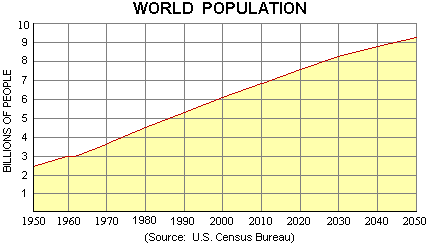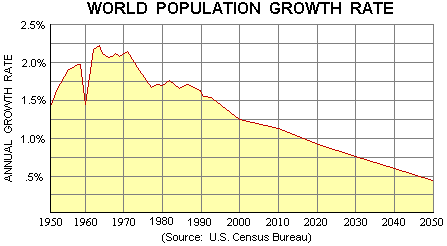Most of the isolated peoples
that anthropologists studied around the world in past generations are now in dismal
situations. Small indigenous societies have
suffered as a consequence of the spread of
western culture over the last century. Some of
these peoples have died out, while most are in terminal phases of the stressful process of
rapid acculturation. This radical, often
painful culture change is occurring mostly in underdeveloped nations today. These
countries have persistent low levels of living that can be linked historically to the
manner of their integration into the world economic system. They usually provide
cheap raw materials and labor. Their natural and human resources are bought cheaply
by rich nations and transnational
corporations.
It is quite clear that small indigenous societies have not been the only ones experiencing rapid, dramatic culture change over the last century. People in all societies have faced unprecedented changes in their lives. There has been a globalization of economies so that the entire world is now economically tied together by complex webs of interdependence. Most manufactured items that we buy have components produced in several countries on different continents. Fresh produce in our supermarkets often was grown elsewhere, especially in the winter. Corporations regularly outsource their tech support and other phone based services to India. Manufacturing jobs also progressively move to China, Bangladesh, Sri Lanka, and other nations where labor is comparatively cheap. In a very real sense, geographical barriers are things of the past. Distances do not matter any more for communication and business. When there is a stock market collapse in Asia, Europe, or North America, it reverberates throughout the rest of the world within a day. Regional economic independence no longer exists. Economic wealth also has progressively shifted from nations to transnational corporations. At the present time, 51 of the 100 biggest economies in the world are corporations. More than 20 million Americans now work for major transnational corporations, often in other countries.
The rate of globalization has been accelerating over the last decade. Contributing factors in making the world a smaller place have been the spread of Internet and email access as well as massive levels of international travel. Every year, approximately 8 million Americans travel to other countries on business trips and 19 million visit other parts of the world as tourists. Frequent international travel is by no means limited to Americans. It has become common for people in the industrialized regions of the world. However, the majority of those living in underdeveloped nations do not travel internationally nor do they have Internet access. Over half of all North Americans are using the Internet, but only 1% of the people in Africa and the Middle East have it available to them. However, images, values, and tastes from the Western World are now flooding virtually all nations via television, movies, print advertising, and commercial products.
We are living in a time of a continuously accelerating knowledge revolution. This has resulted in shorter time periods between major impacting technological inventions. In less than a single lifetime, jet aircraft, televisions, transistor radios, hand held calculators, cellular phones, computers, the Internet, and iPods have appeared and radically changed our lives. Rapid, inexpensive global communication and travel are a reality. On the down side, information overdose is now a common problem. People in developed nations have 24 hour access to news and entertainment in many forms and vast databases of information are as close as the nearest computer with Internet access.
|
|
|
|
|
Mentally demanding
office work has largely replaced physically demanding factory and farm work |
Crowded
Japanese sidewalks at rush hour resulting from workers being concentrated in cities |
Driving all of these global changes has been a dramatic increase in the size of the human population. Our numbers have doubled over the last 4 decades. However, only 5% of that growth has occurred in the developed nations. Because the underdeveloped nations in Africa, Asia, and Latin America are generating nearly all of the population growth, we will have added the equivalent of 3 more impoverished sub-Saharan Africas to the world within a quarter of a century.

 |
|
|
"Graying"
populations in the developed nations |
However, the overall world growth rate is now declining, especially in the developed nations. Birth rates generally are down, but life spans are longer. Consequentially, the elderly are the fastest growing age group worldwide, even in many of the poorer nations. Those 65 and older are likely to increase in numbers twice as fast as the population as a whole at least until 2020. One result of this change will be an increasing financial burden on younger working people to pay for the pensions and medical costs of the expanding elderly group. The graying of the population is most pronounced now in Europe and Japan. Italy has the unenviable record of being the first nation to reach the point at which there are more people over 60 than under 20 years old. Spain, Germany, and Greece will shortly achieve this ratio also. In the United States, similar trends are being statistically masked by an enormous immigration of young people from Latin America.

In some regions, however, the trend is just the opposite. For instance, Nigeria's continued high birth rate will likely result in a doubling of its population over the next quarter century. While the highest projected growth rates are in Africa, the biggest population increases will be in the developing nations of Asia.
| SHARE OF THE WORLD POPULATION | ||
| 1970 | 2020 | |
|---|---|---|
| Less Developed Nations | 72.9% | 83.6% |
| More Developed Nations | 27.1% | 16.4% |
| Geographic Region: | ||
| --- Sub-Saharan Africa | 7.8% | 13.5% |
| --- Near East and North Africa | 3.9% | 6.4% |
| --- China (Mainland and Taiwan) | 3.9% | 6.4% |
| --- Other Asia | 29.7% | 35.0% |
| --- Latin America and the Caribbean | 7.7% | 8.5% |
| --- Eastern Europe and the former Soviet Union | 9.5% | 5.8% |
| --- Western Europe, North America, Japan, and Oceania | 18.9% | 12.0% |
| (Source: U.S. Census Bureau) |
 |
|
Diverse ethnicity in Canada |
Accompanying the dramatic growth in population has been a massive immigration into the richer nations of North America, Western Europe, and Australia by people from the poorer ones. This primarily economic driven migration has had a profound effect on life in the receiving countries. The new diversity has been felt particularly by public services. For instance, large school districts in California now must cope with more than 75 different languages being spoken by their students. Generally, these demographic changes have more profoundly affected cities than rural areas. In Los Angeles, for example, only 9% of its residents were foreign born in 1960. By 1990, that number had grown to 40% of the population.
Within the industrialized nations, there has also been massive internal migration over the last half century. Many middle class urbanites moved out into suburbia and beyond. In addition, there have been extensive regional migrations. For instance, many Southern Italians have moved to Northern Italy for jobs. Many people from Ireland, Scotland, and the old industrialized cities of Northern England have moved to Southern England for the same reason. In the United States, millions of people from the old industrialized "Rust Belt" centers of the Northeast have migrated south and west to the "Sun Belt."
Over the last two centuries, there has developed a progressive disparity in wealth between nations and between major regions. Economic power has become concentrated mostly in the industrialized nations of the northern hemisphere. Their control of manufacturing and international trade resulted in an unequal playing field. This disparity has provided people in the richer nations with greater access to food, electricity, fossil fuels, education, and medicine with the consequence that their lives are materially more comfortable and their life spans are significantly longer. By comparison, 1.2 billion people in the third world live on less than one U.S. dollar per day.
The disproportionate amount of resources used by the rich nations has exacted a high cost for our planet. There is increasingly burdensome environmental decimation and pollution as well as depletion of key non-renewable resources. This situation will likely become much worse over the next few decades as China, with its enormous population, becomes highly industrialized and the standard of living for its population increases dramatically. They already consume more meat, grains, coal, steel, and several other basic resources than the United States. Americans still use more oil than any other nation, but consumption is increasing rapidly in China. If the trend in growth of the Chinese economy and standard of living continues at its current rate, by early in the 2030's they could be consuming more oil and other key resources than the entire world currently produces. The phenomenal growth in the Chinese economy comes at a high price for its own people. Their cities are among the most polluted in the world. Not far behind China in becoming an economic powerhouse in the 21st century will likely be India, the second most populous nation. A consequence of this will be a dramatic increase in the global competition to acquire key resources.
 |
|
Poor African women
doing |
|
One of the most far ranging social and cultural changes that has occurred over the last century has been the increase in economic and political power of women in the developed nations, especially in the Western ones. During the 19th century, women in these countries generally could not vote, attend a university, become doctors, lawyers, politicians, government officials, or corporate leaders. They were expected to only aspire to become housewives and mothers. When married, their husbands often gained full legal rights to their property. This second class status of Western women has largely ended. Men gave up some of their power due in part to the need for women to actively participate in industrial production during the great world wars of the first half of the 20th century. It also has been due to the emergence in recent decades of post industrial economies that require much less manual labor in factories. An additional important factor has been the constant pressure by women to be treated as equals. However, the significantly increased status and power of Western women generally has not been matched by women elsewhere in the world.

